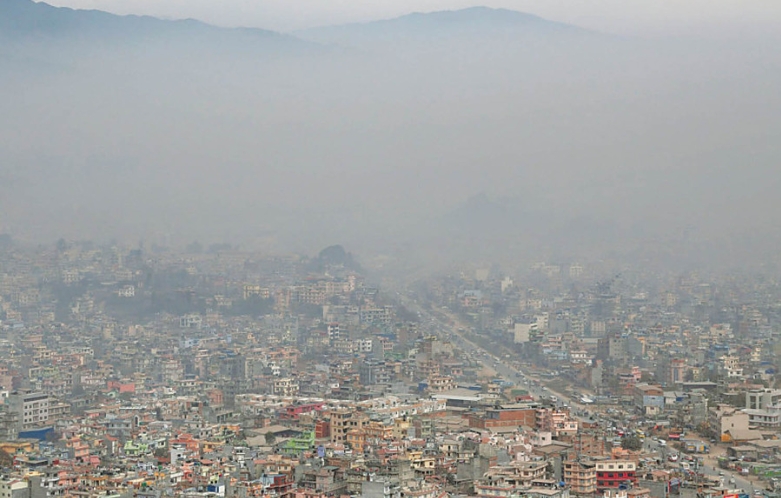
SATV April 1, Kathmandu: A dense blanket of haze and dust engulfed the Kathmandu Valley on Monday, pushing the Air Quality Index (AQI) into the 'Very Unhealthy' category and severely affecting visibility, leading to the disruption of international flights.
According to the Ministry of Forests and Environment's Department of Environment Air Quality Monitoring, air quality in Bhaisipati was classified as 'Very Unhealthy,' with the United States Air Quality Index recording a reading of 242 at 7:30 PM.
The air quality monitoring station in Bhaisipati area registered PM2.5 levels at 185 micrograms per cubic meter-significantly exceeding safe limits. When PM2.5 levels range between 150 and 250 µg/m³, air quality is deemed 'Very Unhealthy,' posing serious health risks, particularly for vulnerable groups.
Flights Diverted Due to Low Visibility
Rastriya Samachar Samiti (RSS) quoted Tribhuvan International Airport (TIA) spokesperson Rinji Sherpa as stating that multiple flights were unable to land due to poor visibility and had to be diverted.
"Visibility was only 1,600 meters, falling short of the required standards for landing," Sherpa explained, adding that while visibility later improved to 3,000 meters, dust and haze continued to hinder flight operations.
Rising Health Concerns
Government official Tarka Raj Khanal highlighted the worsening pollution levels in the Valley. Observing the city from a rooftop restaurant at Basantapur Durbar Square this afternoon, he noted reduced visibility and worsening air conditions.
"I am experiencing a burning sensation in my eyes and mouth, along with an itchy throat," Khanal said, expressing concern over the deteriorating air quality.
Doctors have warned that prolonged exposure to such high pollution levels can cause both short- and long-term health complications. Dr. Achyut Bikram Hamal advised people, especially children, pregnant women, the elderly, and individuals with respiratory illnesses, to avoid outdoor activities.
"Even young and healthy individuals may suffer from respiratory issues when air quality reaches unhealthy levels," Dr. Hamal cautioned. "People should minimize exposure, wear N95 masks, and avoid highly polluted areas."
Poor air quality can lead to a range of health issues, including pneumonia, bronchitis, conjunctivitis, skin allergies, stroke, and heart disease in the short term. Long-term exposure increases the risk of lung and intestinal cancer, kidney disease, and chronic heart conditions, Dr. Hamal warned.
With pollution levels soaring and public health at risk, authorities have urged residents to take precautionary measures and limit outdoor exposure until conditions improve.
#Kathmandu air pollution












